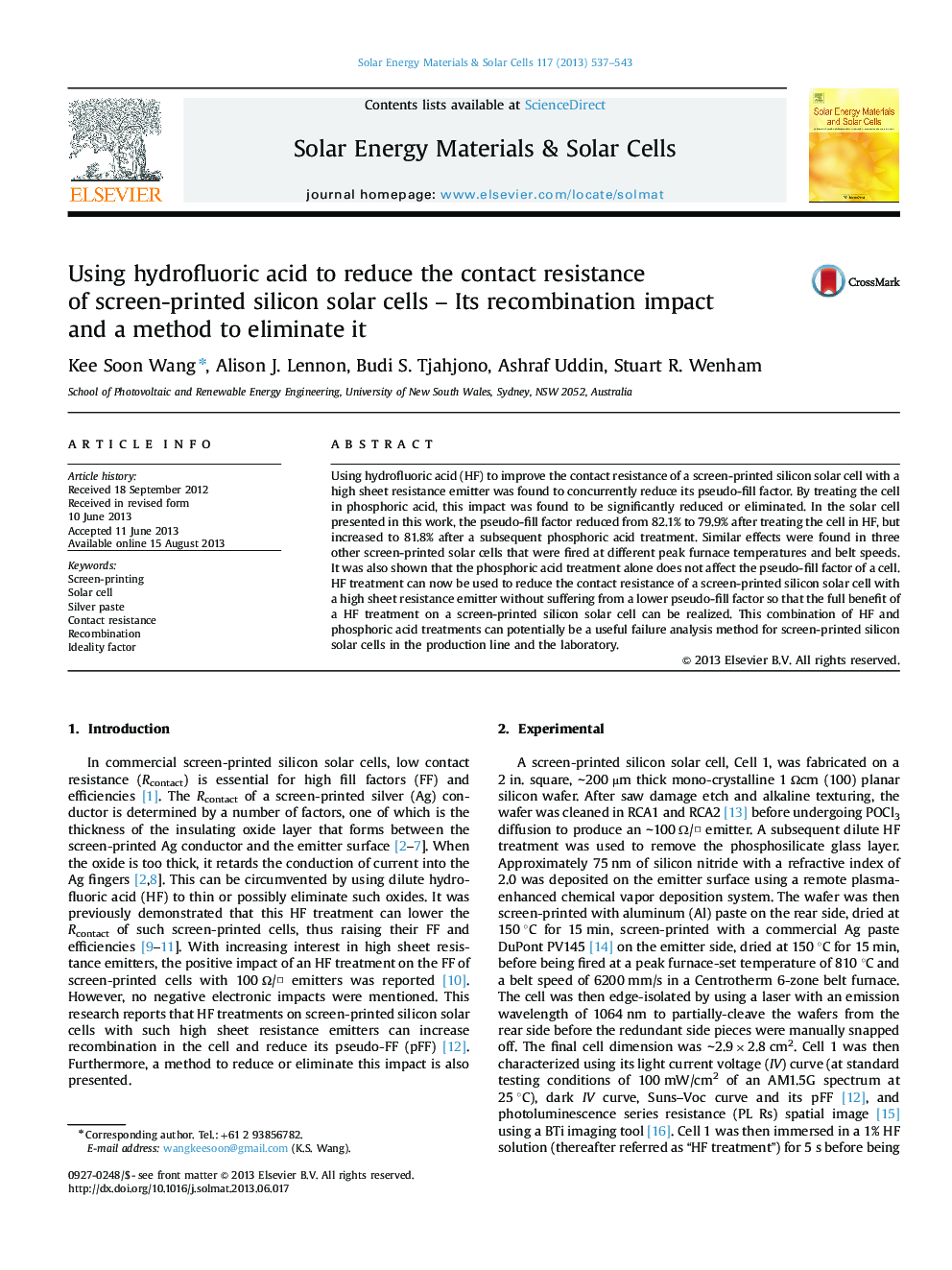| Article ID | Journal | Published Year | Pages | File Type |
|---|---|---|---|---|
| 6536422 | Solar Energy Materials and Solar Cells | 2013 | 7 Pages |
Abstract
Using hydrofluoric acid (HF) to improve the contact resistance of a screen-printed silicon solar cell with a high sheet resistance emitter was found to concurrently reduce its pseudo-fill factor. By treating the cell in phosphoric acid, this impact was found to be significantly reduced or eliminated. In the solar cell presented in this work, the pseudo-fill factor reduced from 82.1% to 79.9% after treating the cell in HF, but increased to 81.8% after a subsequent phosphoric acid treatment. Similar effects were found in three other screen-printed solar cells that were fired at different peak furnace temperatures and belt speeds. It was also shown that the phosphoric acid treatment alone does not affect the pseudo-fill factor of a cell. HF treatment can now be used to reduce the contact resistance of a screen-printed silicon solar cell with a high sheet resistance emitter without suffering from a lower pseudo-fill factor so that the full benefit of a HF treatment on a screen-printed silicon solar cell can be realized. This combination of HF and phosphoric acid treatments can potentially be a useful failure analysis method for screen-printed silicon solar cells in the production line and the laboratory.
Related Topics
Physical Sciences and Engineering
Chemical Engineering
Catalysis
Authors
Kee Soon Wang, Alison J. Lennon, Budi S. Tjahjono, Ashraf Uddin, Stuart R. Wenham,
